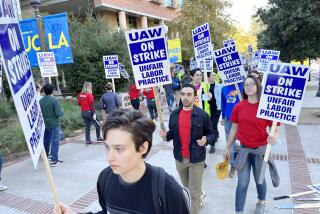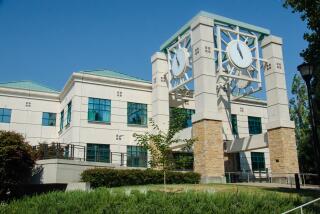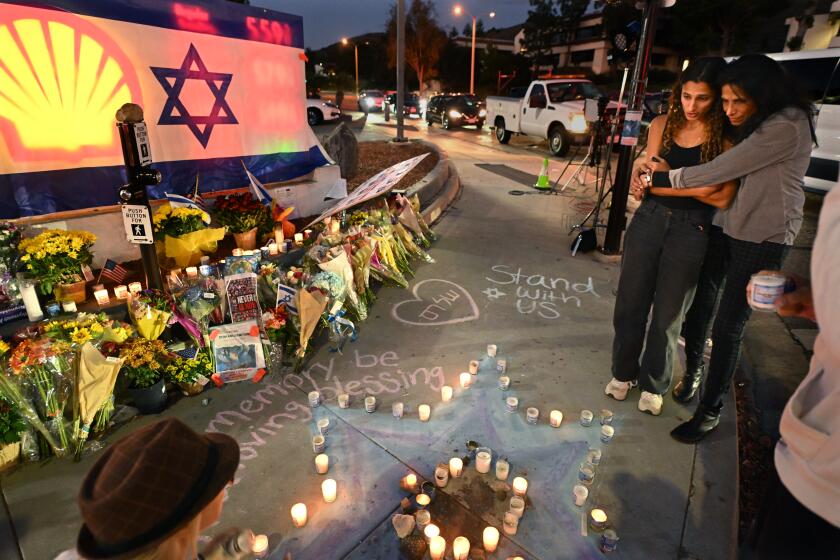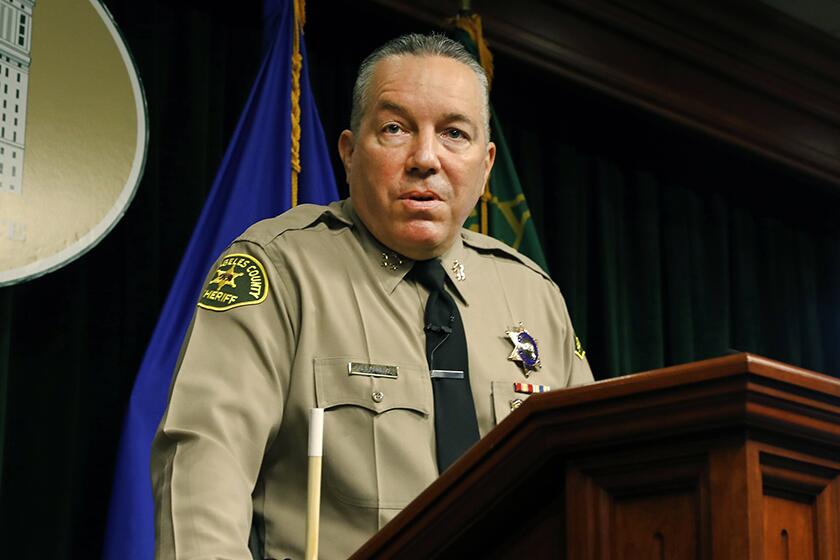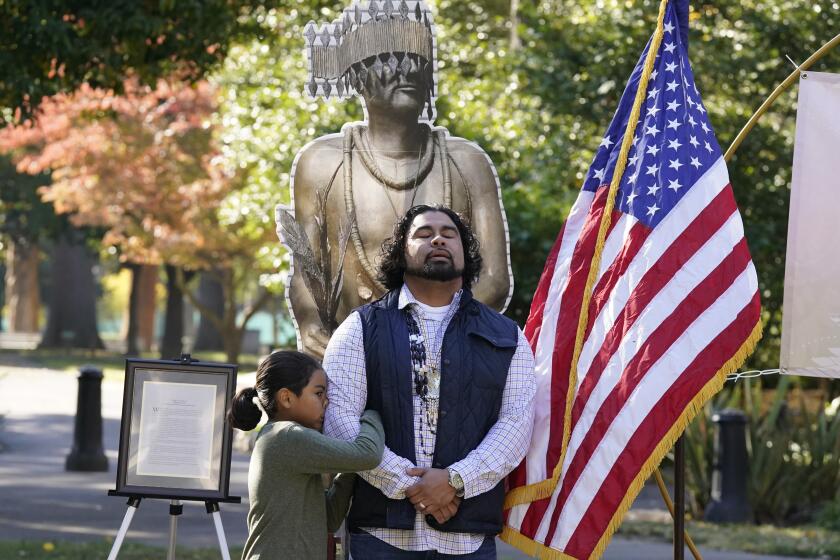Local Therapy Groups Seek to Ease Anger
As the details of O.J. Simpson’s history of spousal abuse unfolded last week, Alan Bush felt the jittery craving of an alcoholic watching someone get drunk.
“When you hear about battering going on, you feel it,” said Bush, a 42-year-old grocery store manager whose violent behavior toward women began in high school. “It’s an addiction. The feeling of going after my wife is kind of always there.”
Bush has no idea whether the former football star killed his wife. But for men like him, the now famous 911 tape of Simpson bellowing in rage and his wife whimpering in fear brings back feelings of dread that if someone had not stepped in and stopped them, their own wives would be dead.
“I know the last time I did this to Mary I was trying to kill her,” added Jim, a 39-year-old computer systems director, who severely beat his wife in their Irvine home in September. “She did call the police the first two times, and nothing came out of it. They talked to me and threatened to arrest me. The third time, I just really wanted it over with, whatever it took.”
What it took to stop men like Jim, Bush and increasing numbers of others like them was a court-ordered group therapy program, a treatment similar to Alcoholics Anonymous for batterers.
Spouse abusers have long been the criminal justice system’s hot potatoes, and no one has quite figured out how to cool them off. For years, if a man happened to kill his wife in a jealous rage, it was not a brutal homicide, but a “domestic” incident given short shrift by police, prosecutors and judges and buried in the back pages of the local paper, experts said.
“It was still a family problem, usually knocked down to manslaughter,” said Bill Thomas, director of Options Counseling, a program for batterers in Fullerton and Long Beach.
But Thomas and others said the Simpson case--and the leniency shown him by authorities after earlier domestic disputes--has focused attention on the treatment given to men who abuse their wives and girlfriends.
Domestic violence experts say when a batterer is not held accountable for his behavior because authorities fail to intervene in a “family matter,” it is easy for him to minimize the seriousness of his actions.
“Even if you don’t believe (the abuse) is OK, you believe there are no logical consequences,” said Alice La Violette, director of Alternatives to Violence, which runs counseling groups for batterers from Orange and Los Angeles counties. “You think, ‘The system’s on my side. This is no big deal. No one ever did anything about it.”
Most judges now send first-time spouse abusers, men such as Jim and Bush, to anger-management classes or therapy groups for batterers once a week for at least nine months, Thomas said. The penalty for absenteeism: 180 days in jail.
“O.J. got ripped off because he was never forced to go to a group,” said Bush, 42, the Long Beach grocery store manager. “If he was forced to go to my group--one day a week for a solid year--this wouldn’t have happened.”
Jim, who is in the midst of a divorce and recently moved to Sacramento, credits a court-ordered anger management program run by Human Options, a shelter for battered women in South Orange County, for teaching him how to control his rage.
Jim said he and his wife had been married for 17 years before he slapped her the first time last March, angry that she had not paid the bills on time. Two months later, while drunk, he beat her again while their two children, a girl, 17, and a boy, 11, looked on, he said.
“Nothing was ever resolved and the issue kept coming back, and every time it came back it was worse,” he said. “As a former Marine, I knew I could develop those type of rages. But I did not know I could develop them toward her. It scared me.
“One of the problems was I didn’t know where to go for help. I didn’t even know who to ask. It was not something you talked about.”
The third time Jim began to beat his wife, his daughter called the police. Jim was charged with nine misdemeanor counts--one charge each of assault, battery and spousal abuse for each time he beat his wife, he said. The judge sentenced him to 20 days of community service, three years of probation and a program for batterers.
“What made me capable of talking about it in the group is that others had had the same feelings,” Jim said. “I don’t know that I will ever really understand what happened. But I know what the warning signs are when I get angry. Now I walk away. It’s the easiest thing to do.”
Bush, who said he comes from an abusive home, remembered first striking his wife when the couple were high school sweethearts.
“It was simple. I would start nit-picking things she did that I didn’t like. It just evolves into finally striking someone,” he said. “They get immune to you, so you have to go to the next step. You have to find a new way to keep them under control.”
Bush said the group taught him how he was controlling his wife and justifying his own increasingly violent behavior.
“You beat them so badly they don’t have any self-esteem,” he said. “They really end up taking responsibility for their own battering: ‘If you wouldn’t do that, you wouldn’t get hit.’ ”
Bush’s wife delivered an ultimatum after 15 years of abuse--either seek counseling for his battering or she would leave him. Alternatives to Violence saved both his life and his wife’s, Bush said. And it is still helping. After 3 1/2 years away from the group, Bush said he went back six months ago when he felt the old feelings returning.
“For me my stomach really rumbles, and I get really hot and sweaty and I feel my mind spinning really fast and I don’t feel fully in control,” Bush said. “Nowadays, when my stomach starts to turn I know, ‘whoops, I need to do something.’ We run back to our group when we need a tune-up.”
“It’s like being an alcoholic,” he said. “The rush of hitting somebody. I enjoyed hitting people. I have a lot of power over that demon now.”
More to Read
Start your day right
Sign up for Essential California for news, features and recommendations from the L.A. Times and beyond in your inbox six days a week.
You may occasionally receive promotional content from the Los Angeles Times.

